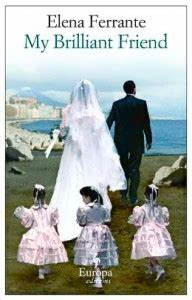Cherokee America is one of those rare novels that capture a place and a time so well that reading the book feels a little like what time travel must be like. In this instance, the place is the Cherokee reservation in Oklahoma, the time is 1875, and the book is about a mixed-race family trying to walk both sides of the line that marked the racial divides of the late nineteenth century.
Cherokee America and her family are the survivors of a people long accustomed to having the United States government snatch from them anything it has a use for, be it their property or their very lives. By 1875, many on the reservation have grown a little complacent about their situation, but people like Check (as she has come to be called) know better. They understand that little has really changed and that their security is best protected by not giving the local marshal and his deputies any excuse for coming on the reservation in the first place. But the new judge and his men are always looking for a reason to interfere with reservation law enforcement – and if not given a legitimate excuse, they are certainly capable of creating one for themselves.
Cherokee America is long, complicated story about the generational relationships of three reservation families: The Singers (of which Check is the matriarch), the Corderys, and the Bushyheads. The members and hired help of the three families interact so often and in so many different combinations that the two most important pages in Cherokee America may well be the ones used for the book’s “Cast of Characters,” a family tree of sorts that helps the reader keep all the players straight. I can’t, in fact, imagine anyone enjoyably reading this one without frequent reference to those two pages.
Check is married to Andrew, a white man on his death bed, and for Check, her five sons, and their hired help, life is pretty much on hold until Andrew’s passing. But on hold does not mean that young men are not going to get up to their usual mischief in the meantime – with not unexpected, but serious, repercussions. These people, whether related by blood or not, are family and what is good for one of them is good for all of them. Andrew’s funeral party is a perfect reflection of daily life on the reservation:
“For after the ground was packed, the son of the most famous Cherokee preacher prayed over his grave, first in the native language and then in English. Ceremonial smoke floated from small fires set by family groups. On a spot southeast of the bare earth, a few men and women danced to a chant. Others in the party included white frontier entrepreneurs, former slaves, and more than one man who’d escaped from the law in the United States. But mostly the mourners were a large group of mixed-blood people who shared a common history. They were neither Indian nor white, but both. And uniquely American.”
 |
| Margaret Verble |
But how much longer will they be able to protect themselves from outsiders who want what they have and are willing to do whatever it takes to get it. After a young Indian girl suddenly disappears, an important member of the Cherokee Nation is murdered, and two white men are thought to be involved, Judge Isaac Parker (who came to be known as “the hanging judge”) is eager to use this excuse to extend his territorial control into the reservation itself. But the Singers, the Corderys, and the Bushyheads just might have something to say about that.
Bottom Line: Margaret Verble, author of Cherokee Nation, is a citizen of the Cherokee Nation of Oklahoma, and although the events of the novel are entirely fictional, the novel is loosely based upon members of her own family. Interestingly, one of the book’s more colorful characters is based upon the real-life grandmother of Will Rogers. Verble often uses humor to portray the deep connections between people and those places whose loss they mourn - and the other places they fight to keep. This one takes a little work (remember that “Cast of Characters” previously mentioned) but it’s worth the effort.








































